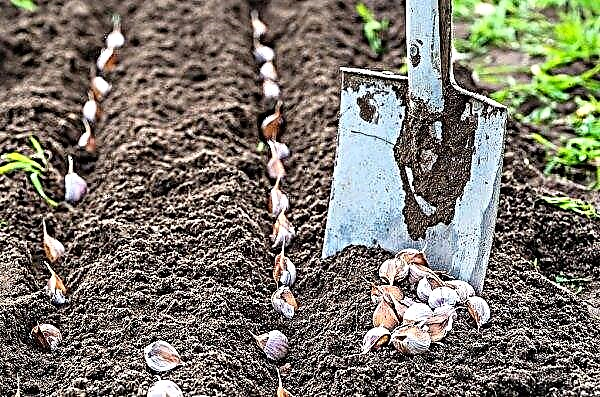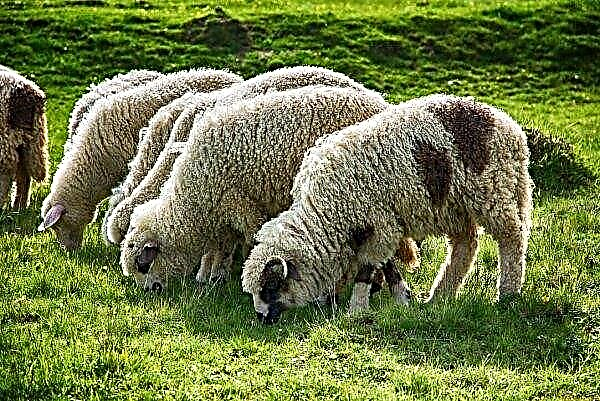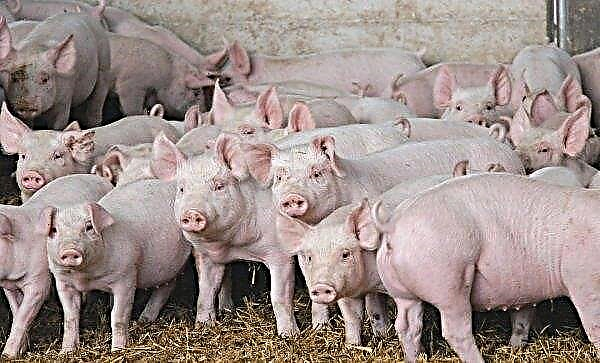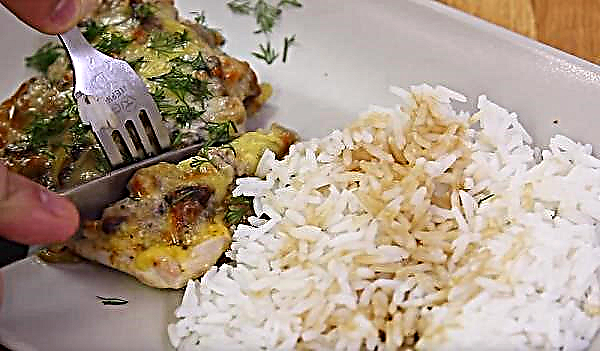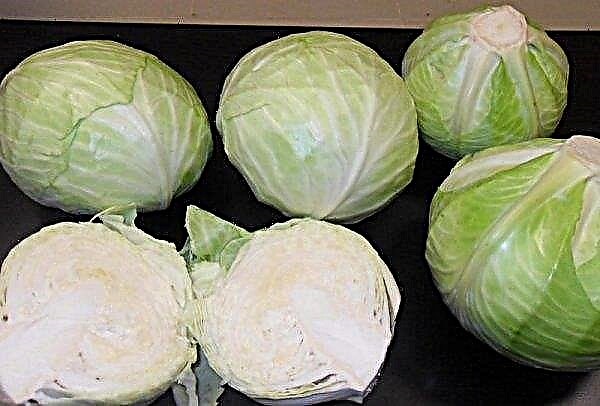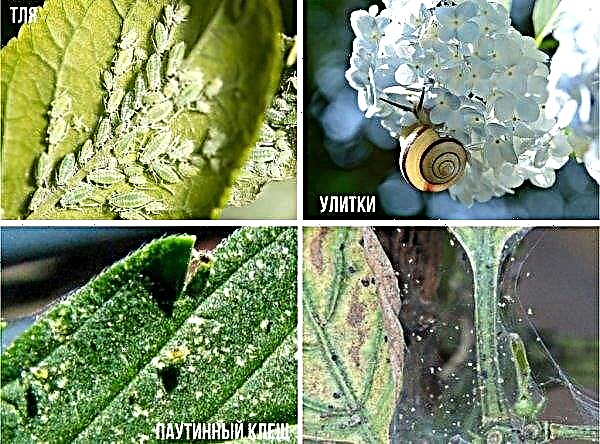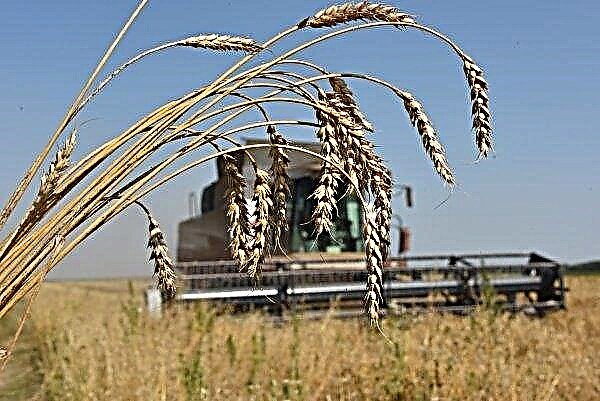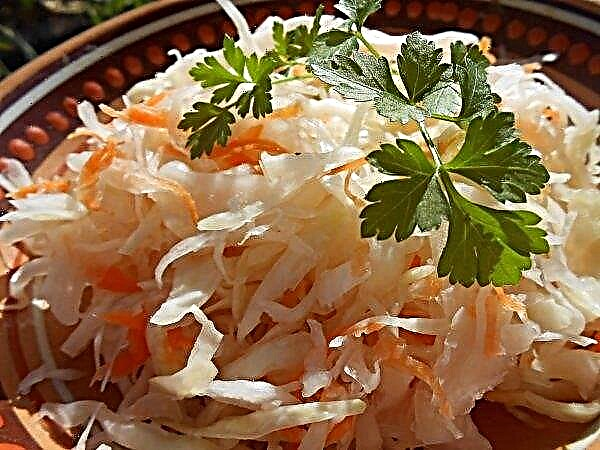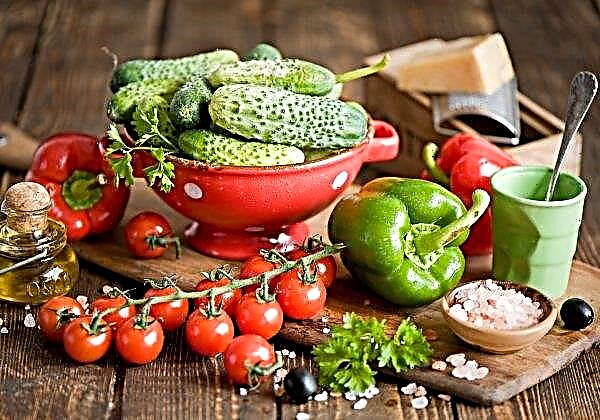It was not so long ago that it was hard to imagine that such a capricious and thermophilic culture like eggplant would bear fruit in the northern regions, and even on the open ground. It is a hybrid variety King of the North. Further, the article describes its advantages and features of cultivation.
Botanical description of the culture
The eggplant variety King of the North F1 appeared relatively recently. This frost-resistant hybrid was bred specifically for the northern regions, where it quickly became very popular, not to mention the middle lane and Siberia. The culture is adapted to adverse conditions, unpretentious, grows in greenhouses and in open ground.
It belongs to the earliest varieties: it begins to bear fruit 3.5 months after the emergence of seedlings and continues throughout the summer. The variety is very productive: from 1 bush you can collect 8-10 fruits. From the name F1 it follows that this is a hybrid of the first generation. In the second generation, unfortunately, he does not give a crop.
The bushes are strong and tall: in greenhouses they grow up to 1 m, in the garden - 50–70 cm. Tall plants need a garter, otherwise they can break off under the weight of the fruits. The stems and veins on the leaves are purple. The plant blooms abundantly with light purple flowers. The fruits of this variety are dark purple, narrow and long (20-30 cm), even or curved in an arc. Each weight is 250–300 g. The peduncle is not prickly, which facilitates the removal of ripened vegetables. The skin is smooth and thin. The pulp is dense, white, almost without seeds.
The fruits of this variety are dark purple, narrow and long (20-30 cm), even or curved in an arc. Each weight is 250–300 g. The peduncle is not prickly, which facilitates the removal of ripened vegetables. The skin is smooth and thin. The pulp is dense, white, almost without seeds.
The taste is good, without bitterness. The long fruits hanging on the bushes, especially the lower row, often come in contact with the ground, which causes decay. This problem can be solved by mulching.
Did you know? The ancient Greeks believed that if you eat a large number of eggplant, you can lose your mind. Therefore, they called this mysterious vegetable "rabies apple."
Advantages and disadvantages
Hybrid is not for nothing called the King. It has significant advantages that many gardeners have appreciated.
- These include:
- early ripening;
- high productivity (up to 15 kg from 1 m²);
- frost resistance;
- undemanding care;
- immunity to many typical diseases;
- good taste, without bitterness;
- beautiful presentation;
- excellent keeping quality;
- adapted for open ground and greenhouses;
- Suitable for home and industrial cultivation.
- Like other hybrids, the King of the North has its drawbacks:
- the inability to grow a second crop of their seeds;
- with improper agricultural technology, fruiting deteriorates;
- the mild taste and shape of the fruit is not popular with everyone.

Self-growing seedlings
In the southern regions with a warm climate, seeds are sown directly into the ground, and they give good seedlings. In the north and in the middle lane it is risky. It is best to grow seedlings, and then plant it in the ground. This method guarantees the germination of almost all seeds, as well as maximum and earlier fruiting.
Did you know? Eggplants are called “demyanki” in Azerbaijan - in honor of a certain Demyan, who was the first to bring vegetables to this country.
Sowing time
To calculate the optimal time for sowing seeds for seedlings, you need to consider a couple of important points:
- sowing should be carried out about 2 months before transplanting seedlings on the bed;
- daylight hours should optimally increase so that seedlings can receive enough light.
The timing is also affected by the territory and weather conditions. Therefore, a suitable time for sowing is considered to be the period from the end of February until the beginning or mid-March.
The soil
The soil for eggplant seeds should be light, loose, with good water and air permeability. Ready land for solanaceous trees meets these requirements.
To prepare the substrate with your own hands, you need to mix such components:
- humus (2 parts);
- turf land or peat crumb (2 parts);
- sheet earth (1 part);
- river sand or ripe sawdust (1 part);
- some wood ash or crushed activated carbon (for the prevention of fungal infections).
 Prepared soil is recommended to be disinfected.
Prepared soil is recommended to be disinfected.There are several ways to do this:
- freezing in a freezer;
- baking in the oven;
- by steaming.
Capacity for growing
Suitable containers for sowing seeds are of 2 types:
- shallow boxes or containers for several tens of seeds, plastic or wooden;
- individual containers: disposable plastic cups, cut-off plastic bottles, cassettes for seedlings with separate cells, small pots.
With the appearance of 2-3 true leaves, seedlings in boxes should be dived into separate cups. Since the roots of the sprouts are very delicate, they are easily damaged during transplantation, and not all seedlings tolerate such stress. Therefore, experienced gardeners prefer to sow seeds immediately in individual containers.
Important! In each plastic container, it is necessary to make drainage holes through which excess water will exit. Also before use, the container must be rinsed with a potassium permanganate solution for disinfection.
In them, seedlings will grow, bypassing the pick, up to planting in a permanent place. Seeds can be planted in peat tablets, however, they are considered unreliable and may fall apart from moisture before the required time.
Seed preparation
It is advisable to buy seeds in specialized stores and from trusted manufacturers. Such seed material is of good quality and is completely ready for sowing: it is processed with special disinfectants and stimulants.
Self-preparation of seeds consists of several stages:
- Warm up the planting material by wrapping it in a gauze napkin and lowering it in hot water (not boiling water) for 3-4 minutes. This procedure quite quickly starts processes that were previously in "sleep mode".
- For the prevention of fungal diseases and pests, it is important to treat the seeds with pink potassium permanganate (lower in a solution for 20-30 minutes, rinse and dry) or with biofungicides, for example, Trichodermin, (soak for 10-12 hours without washing).
- At the request of the gardener, the eggplant seeds can be additionally treated with a growth stimulator, for example, Kornevin. This will accelerate germination and fruiting.
- Some gardeners germinate the treated seeds on a wet towel for 2-3 days.
Of all these preparatory steps, the second is mandatory - disinfection. The rest are applied at the discretion of the gardener.
Sowing seeds
The technology of sowing seeds of the King of the North is the same as that of other varieties of eggplant:
- depth should be about 1.5 cm, but not more than 2 cm;
- the distance between the seeds in the common boxes - 3-5 cm;
- 1-3 seeds are placed in a separate cup (weak shoots are then removed);
- from above they should be sprinkled with a thin layer of the same soil and moistened from the spray gun;
- cover the container with film or glass and put in the warmest place in the apartment with an air temperature of about + 25 ° C;
- From time to time, the film needs to be lifted, and the earth moistened;
- after emergence, remove the cover.
 If all conditions are met, the germinated seeds will germinate in 8–10 days, and without hatching sprouts, in 2–4 weeks.
If all conditions are met, the germinated seeds will germinate in 8–10 days, and without hatching sprouts, in 2–4 weeks.Seedling Care
From the appearance of seedlings to planting on a permanent place, seedlings need proper care.
Plants grow strong if:
- the room is bright, well-ventilated and heated;
- room temperature is maintained: during the day - + 20 ... + 24 ° С, at night - not lower than + 16 ° С;
- good lighting for at least 12 hours (using a fluorescent lamp);
- irrigation is carried out with warm, settled water every 2-3 days (as the soil dries);
- dive each sprout into a separate bowl;
- Feed the sprouts 2 times: 2 weeks after diving (with nitrogen fertilizer) and 1 week before transplanting into the greenhouse (with complex fertilizer).
Seedlings growing in fertile soil do not need fertilizing. Many gardeners begin to fertilize eggplant only after planting in open ground or in a greenhouse.
Seedling hardening
About 7-10 days before the seedlings are planted in the soil, it is advisable to begin the hardening of seedlings. They take her out to the street or balcony, accustoming to fresh air. The procedure is carried out daily. Staying in the air starts from 2 hours and gradually extends to 10 hours.
This will help strengthen the plants, so they will take root more quickly in a new place and will be easier to tolerate adverse conditions.
Planting seedlings in a permanent place
You also need to prepare for the transplant. To do this, you should choose a suitable place in the garden, prepare this site and make sure that the transplant date has already approached.
The timing
Transplanting seedlings to a permanent place is possible if:
- 2–2.5 months have passed after sowing the seeds;
- sprouts reached a height of 15–20 cm;
- each plant has 4-8 strong leaves, small buds are allowed;
- air and soil are already warm, the temperature does not fall below + 15 ° C;
- night frosts have already ended.
In the greenhouse of the King of the North can be planted in mid-May. But for transplanting into open ground, you need to wait until the beginning of June.
Seat selection and crop rotation
When choosing a place for planting eggplants, experienced gardeners take into account important factors:
- The site should be well lit by the sun, but at the same time closed from the cold winds by planted bushes or the wall of the house. Sometimes you need to specially build a wall from improvised means to close the bed from gusts of wind.
- The soil is light and loose, slightly acidic. If the acidity level is above 6%, it can be lowered with lime (4 kg / 1 m²).
- Groundwater should not be close to the surface - seedlings may be affected by high humidity.
 It is also important to maintain proper crop rotation:
It is also important to maintain proper crop rotation:- good predecessors: legumes, onions, melon, zucchini, cucumbers, cabbage;
- bad predecessors: eggplant and other nightshade (potatoes, tomatoes, peppers);
- The best neighbors are legumes, as they close the seedlings from the wind and supply the soil with nitrogen.
Important! Eggplant can be planted in the same place no earlier than 3 years later.
Bed preparation
In order for seedlings to develop well in the garden, you need to prepare the soil in advance and correctly.
Preparatory steps include the following:
- Autumn digging of the site and its cleaning of weeds and their roots with the simultaneous application of organic fertilizers (compost or humus), as well as lime, if necessary, to reduce acidity.
- Spring loosening (1 month before planting) and the application of mineral fertilizers containing phosphorus and potassium (superphosphate and potassium sulfate).
Scheme and depth of landing
The scheme of planting seedlings of the King of the North looks like this:
- the distance between the bushes is 40-50 cm (for compact bushes no more space is needed);
- the distance between the rows is 60 cm;
- the depth of the pits is 10-15 cm (a couple of centimeters more than the capacity in which the seedlings were).
 In each recess, it is advisable to put a little humus and wood ash, pour 2 or 3 liters of water. When the liquid is absorbed, bushes should be placed in the pits and covered with soil along the cotyledon leaves.
In each recess, it is advisable to put a little humus and wood ash, pour 2 or 3 liters of water. When the liquid is absorbed, bushes should be placed in the pits and covered with soil along the cotyledon leaves.Important! Seedlings should be planted with an earthen lump. And if it was in peat cups, then deepen with them.
Further care
The King of the North is rightfully considered the most unpretentious of all varieties of eggplant. Care for him is not difficult. Nevertheless, the plant needs certain conditions both in the greenhouse and in the garden.
Watering
Like other varieties, the King of the North loves moisture, but not excessive.
When watering this culture, you need to remember the following:
- frequency of watering: 1-2 times a week, if the weather is not hot; daily or every other day in hot weather (at a temperature of + 30 ° C and above);
- amount of moisture: 2-3 liters under 1 bush;
- water settled, room temperature (+ 25 ° С);
- the right time is early morning, when there is still no bright sun;
- The recommended method is drip irrigation.

Fertilizer application
This hybrid perceives feeding well, but at different stages of the growing season it needs different chemical elements:
- nitrogen is needed at the beginning of the growing season (ammonium nitrate, 15 g per 1 bucket of water);
- during flowering and fruiting - phosphorus and potassium (40 g of superphosphate and 20 g of potassium sulfate per 10 l of water).
He loves the “royal” eggplant and organics: compost, humus (2 kg per 1 bucket of water).
It is necessary to feed the crop about 6 times per season. The first feeding is carried out 2 weeks after transplantation, then - every 2-3 weeks. Under each plant, you need to pour 1.5 liters of liquid fertilizer.
Soil care
In caring for young eggplants, cultivation and weeding are important procedures. These actions must be performed simultaneously. Each time after watering or rain, you should loosen the earth, breaking the crust formed, and in parallel remove growing weeds.
However, you can save time and effort when caring for the garden, if you immediately mulch the soil under the plants immediately after planting the seedlings. The material for the mulch can be humus, peat crumbs, sawdust, straw, etc.
- Benefits of mulching:
- permanently retains moisture in the earth;
- prevents weeds from germinating;
- prevents the decay of long fruits that reach the ground.

Preventative treatment
Hybrid King of the North has a strong immunity and rarely has common diseases. Often enough prevention is enough to protect the plants.
Preventive measures include:
- presowing seed treatment with fungicidal agents;
- sprinkling bushes with wood ash, chopped chalk or colloidal sulfur (weekly, when cold and damp summers);
- spraying with fungicidal preparations (1 or 2 times for the whole season).
An effective prophylactic against harmful insects is not yet available. Therefore, when plants are damaged by insects (aphids, spider mites, Colorado potato beetles, slugs), it is better not to waste time on folk remedies, but immediately use special insecticides.
Harvesting
It is time to harvest a crop 100 days after emergence and one month after flowering. Usually it is July and the first half of August. If the summer is warm and the weather is warm, fruiting lasts for several weeks.
Ripe fruits are determined by their appearance: they are long and have a dark purple glossy color. Harvested fruits have good keeping quality. Fresh they are stored in the refrigerator for up to 2 weeks. If each copy is carefully wrapped in a newspaper or napkin, this period can be extended up to 1.5 months. Washed and cut eggplant, folded in a plastic container and sent to the freezer, is stored until the end of winter.
Harvested fruits have good keeping quality. Fresh they are stored in the refrigerator for up to 2 weeks. If each copy is carefully wrapped in a newspaper or napkin, this period can be extended up to 1.5 months. Washed and cut eggplant, folded in a plastic container and sent to the freezer, is stored until the end of winter.
Important! It is impossible to allow ripened eggplants to hang on bushes for a long time. Overriding, they become bitter and are no longer suitable for food.
For a very long time they are stored and in canned form.
So, many gardeners have learned from their own experience that the eggplant hybrid King of the North F1 is an unpretentious culture with many advantages. Observing simple agricultural technology, you can get a plentiful harvest, even in the "zone of risky farming."

